Negative Emission Cows?
It turns out we already have some amazing carbon sequestering biotech in front of us: cows. Cows, and the ecosystems they've evolved with.
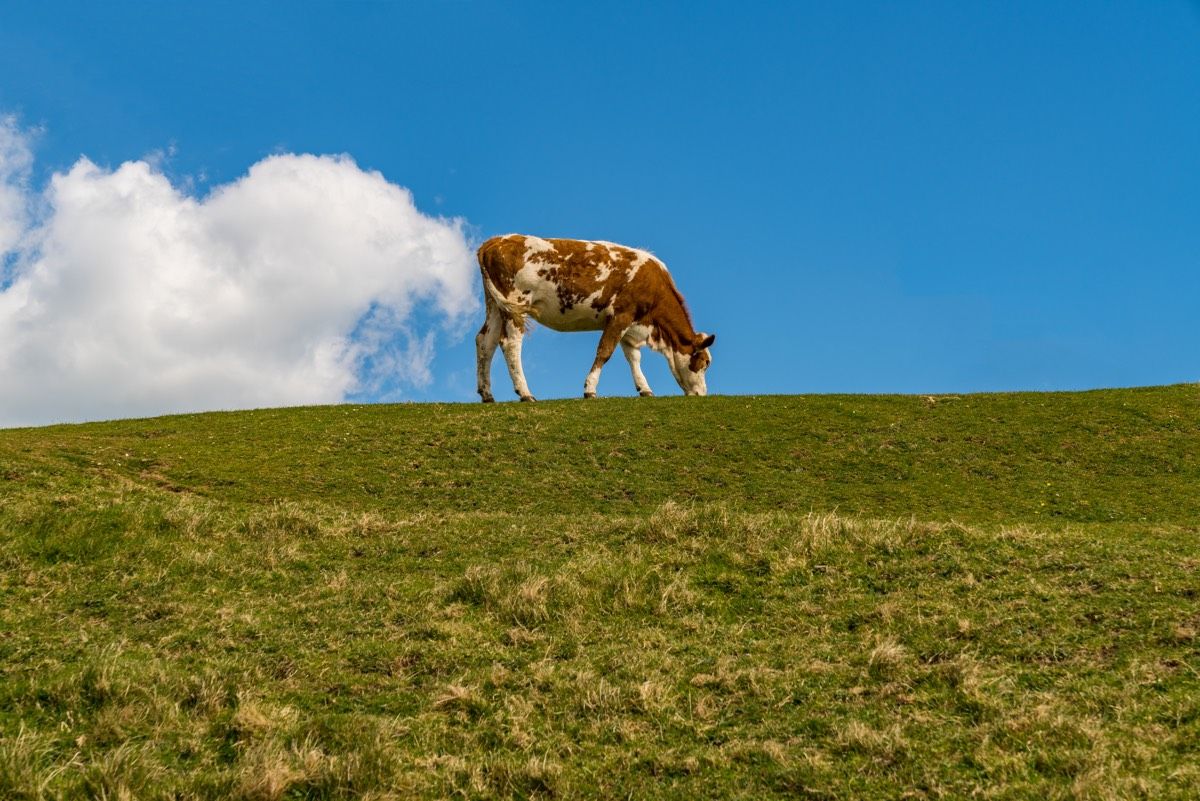
I first heard the idea that we need to pull carbon out of the atmosphere at the Community Bio Summit at MIT from Dr. George Church, the Harvard/MIT genetic engineer trying to de-extinct the woolly mammoth, seed exoplanets with Earth biology, and put his genetic code on the blockchain (among many other things). His question was: how do we pull gigatons worth of carbon out of the atmosphere? That is like several mountain ranges worth of physical material that today is floating around in the air, and we need to put back in the ground (so say the IPCC). From Dr. Church, it is framed as a grand engineering problem. I first thought of this carbon sequestration question in the realm of sci-fi and "deep tech," like space elevators and the singularity. But, after three years of reading and research since that talk with Dr. Church, it turns out we already have some amazing carbon sequestering biotech in front of us: cows. Cows, and the ecosystems they've evolved with.
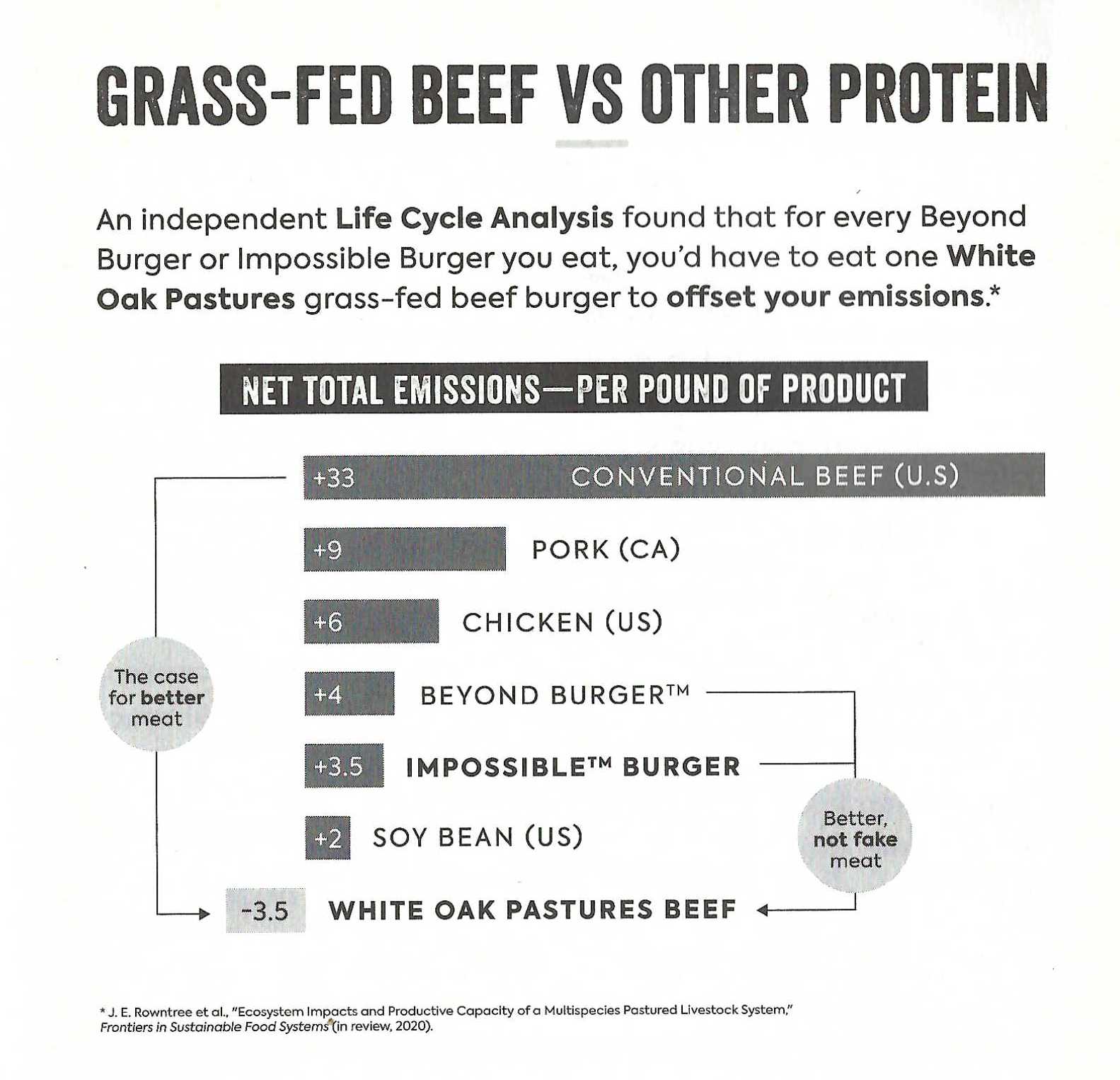
This is a snapshot I took from a book called Sacred Cow: The Case for Better Meat. First it shows that, as we all know, concentrated animal feeding operations (CAFOs), aka "conventional beef," are terrible. Typical beef production is a huge greenhouse gas polluter, with 33 lbs of CO2 emitted for every pound of beef. Not to mention, the animals are miserable, the feedlots poison the watershed through to the ocean, and the product is unhealthy. Plant based proteins like Beyond and Impossible are a lower pollution alternative, but still reliant on intensive monoculture farming, meaning they are not so much a climate solution as a way to slow down the apocalypse. Only one option on the list actually removes carbon from the atmosphere and puts it in the soil, and that is regeneratively raised beef. The 20 year longitudinal, peer-reviewed life-cycle assessment study of White Oak Pastures Regenerative Beef can be found here.
While we have too much carbon in the atmosphere and ocean, we don't have enough in the soils. And in addition to not being in the atmosphere anymore, soil carbon has a bunch of positive benefits for soil biodiversity, water cycling, root health, and nutrient availability in food. Modern extractive agricultural practices have depleted soil carbon for over 200 years, and farmland across the world is at all-time low levels of soil carbon deposits. The carbon that used to be there supporting fertility is now in the atmosphere warming the climate. We need to put as much of it back in the soil as we can as quickly as we can!
As for the big question (How?), you can check out The Savory Institute to learn how holistic management and intensive mob grazing strategies can work in detail, but the high level strategy is simple: mimic nature. Grazing herds in the wild – picture bison in America or wildebeest in Africa, etc – are constantly in motion to make sure there is enough to eat every day, but also very densely packed to protect from predators. Grassland ground gets trampled, eaten up, crapped upon in an intense burst while the herd moves through – but then left alone for a long time to recover until the herd returns.
"These regenerative agriculture principles suggest that modern livestock systems can be redesigned to better capitalize on animals' ecological niche as biological up cyclers and may be necessary to fully regenerate some landscapes." – Rowtree et al, "Ecosystem Impacts and Productive Capacity of a Multi-Species Pastured Livestock System," Frontiers in Sustainable Food Systems, 2020
Contrast this to conventional grazing today, where you let the cows out in a single giant pasture and they do whatever they want at very low density (<100k animal lbs per acre). This type of grazing is a recipe for desertification, as we have seen across the Rocky Mountain West, Serengeti Plane, and elsewhere.
High-stocking density intensive rotational grazing, or "mob grazing," moves cow herds across the land in a way that mimics the grazing herds that grasslands evolved with. Moving the cows every day to new pasture, maintaining high stocking densities (500k+ animal lbs per acre), and providing long rest periods for the land after it is intensively grazed is one of the best recipes for adding soil carbon to the ground quickly. And, by bringing the ecosystem back into balance by re-introducing keystone species' terraforming behaviors, you also increase native pollinator habitat, water infiltration into the soil, and overall ecosystem biodiversity. All these additional ecosystem services replace intensive chemical inputs, which translates to a more profitable product for the farmer to sell, a more nutritious product for consumers to eat, and a biosphere more conducive to life for all.
Lots of independent farms and ranches have proven this model can work on a local "farm to table" scale, and at premium (high) prices. If you're in the New York City area, I recommend from personal experience that you try the regenerative beef from Cairncrest Farms in Upstate New York, or Acabonac Farms on Long Island. Other awesome regenerative beef farm-direct enterprises include:
- Sylvanaqua Farms (Montrose, VA)
- Mastadon Valley Farms (Driftless Region, WI)
- Brown Ranch / Nourished by Nature (Bismark, ND)
But all of these remain farm-direct buying options: they come as frozen meat in a big box with dry ice keeping it frozen. And because these individual producers are at much smaller scale than "big meat" companies like Tyson or Cargill, the price per pound is usually at least 2x (sometimes more like 4x) what you'd pay at the grocery store. And, of course, in order to be regenerative to ecosystems, farmers can't follow the Big Meat playbook, meaning they can't sell their meat to Tyson, Cargill, etc and access the mass markets of grocery stores that way. To really replace most beef bought in this country with regenerative, you need to build a whole new supply chain for regenerative beef, you can't just take over the old one. And of course the Big Meat army of lobbyists and lawyers is going to make that as difficult as possible.
This is why you can't find regenerative beef at grocery store prices in grocery store shelves (yet). Expensive specialty butchers like Fleishers in Brooklyn and sometimes farmer's markets are usually the only place to buy fresh (unfrozen) regenerative beef. The regulatory and infrastructure investments required for getting a farmer's product on grocery store shelves have kept many truly regenerative beef producers off of grocery store shelves. And why would a farmer go through all that trouble if they can get a much higher profit selling directly online to foodies in Brooklyn anyways? The result is that regenerative beef remains a small part of the food protein market, limited to premium pricing and farm-direct purchasing.
But that's a problem. Total beef production in the US is estimated to be 27.54 billion pounds in 2021. Doing some napkin math (spreadsheet) with the emissions numbers from the chart above, that leaves us with two options:
Conventional Beef: 454.41 megatons of CO2 emissions.
Regenerative Beef: -48.20 megatons of CO2 drawdown.
It is obviously more complicated than a 1:1 replacement, and Beyond Burgers and other plant-based (including potentially lab grown meat fed a plant based diet) will most likely have a place in the food system. But still, the way we make beef is a hugely important question for our ecological outlook.
The Million-Ton Question: How do we replace 100% of industrial beef with regenerative?
There are a lot of people working on this question! Shout-out again to the Savory Institute, who has pulled together a bunch of big brands that are changing their massive supply chains over to regenerative producers only. If you're so inclined, you can check out their holiday gift guide (regenerative leather Timberland boots for Dad maybe?) but you'll see that it is mostly leather or prepared proteins, and no matter how you spin it $100 is a lot of money for a candle/soap bundle.
One group working to get regenerative beef in grocery stores (and that I'm a small investor in) is SoilWorks. SoilWorks is building a "soil to shelves" regenerative beef company in some of the most important beef country in the world: Texas. It's structured as a holding company with multiple operating firms under its umbrella, each focused on a different part of the beef supply chain (with more to come). Their core idea that I love is that if you're taking on the whole beef supply chain, you have to take it on both one piece at a time and all at once. It's a big task, and I'm really excited such a great team is trying to tackle it. If you're in San Antonio, TX, keep an eye out on your grocery store shelves for their Wholesome Meats brand soon!
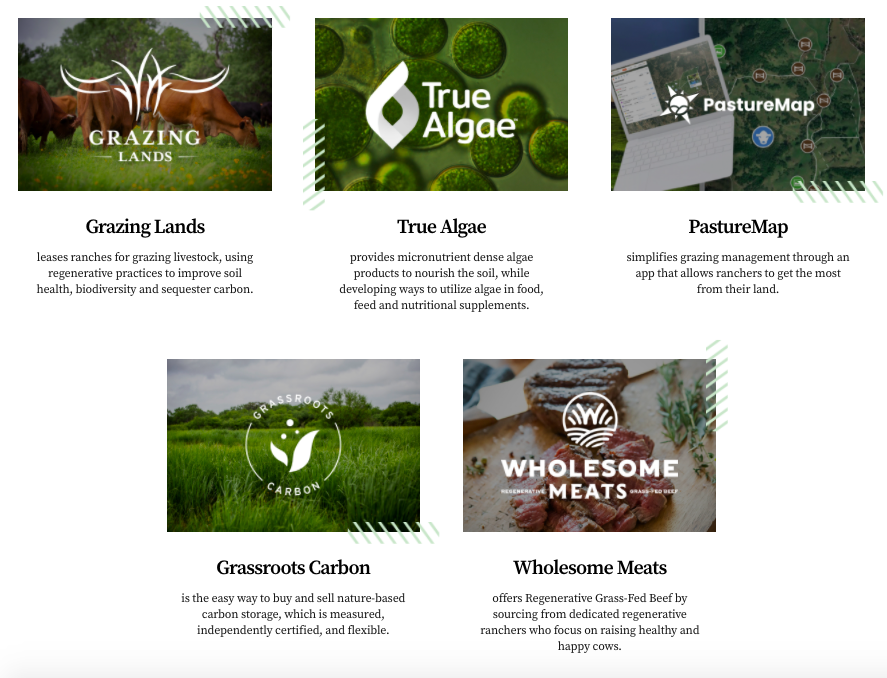
If you're interested in diving into this stuff more, here are some resources that have been super informative for me:
Cows Save The Planet is a great book about regenerative agriculture solutions to climate change. There are lots of good stories in there besides cows, but the cow one is amazing. Highly recommend!
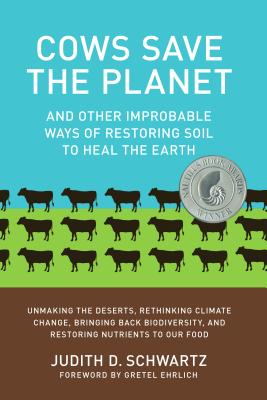
Dirt to Soil is a detailed account of the Brown family ranch in North Dakota transitioning from conventional to an intricate regenerative solution involving chemical free no-till row-cropping, multi-species follow MOB grazing, and cover-cropping.
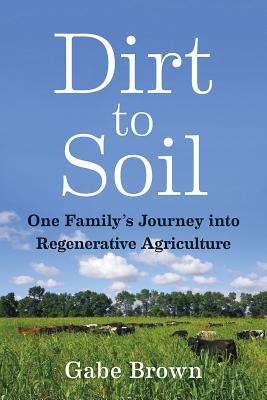
Restoration Agriculture, by Mark Shepherd, asks the question: what ecosystem are we trying to restore our land to? His answer for much of North America is an Oak Savannah, and he has translated that into an agricultural system (centered on grazing with cows) that anyone can apply to their land.

This is a great episode of a great podcast where one of the show's producers, a self-professed "climate vegan," contemplates whether she should end her relationship with her brother over his eating beef on the grounds that he's destroying the planet. They do a good job painting the complicated picture around beef, including the emotional turmoil on both sides of this big debate.
Ultimately, the key to remember when thinking about cows and climate:
It's not the cow, it's the how.
In other words, cows in themselves don't destroy the climate. The way we raise them right now, in CAFOs, is destroying the planet. If you treat them right – stop forcing them to stand on concrete instead of range grasslands, stop forcing them to eat grain instead of grass, and move them through the land like they evolved to live – cows can be one of the climate solutions we've all been looking for.
